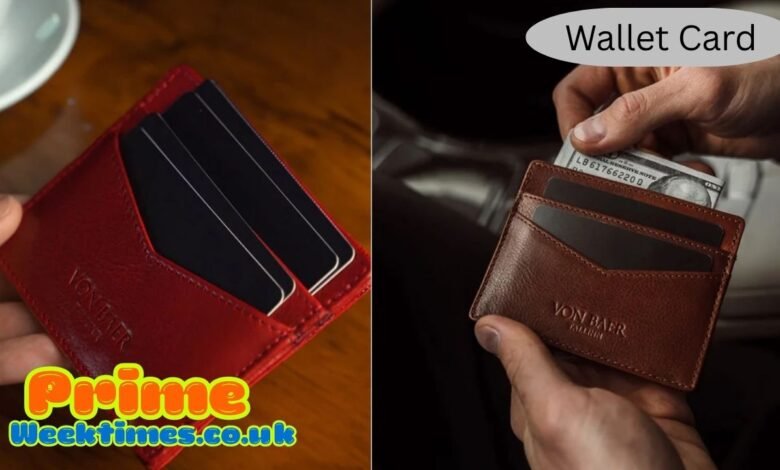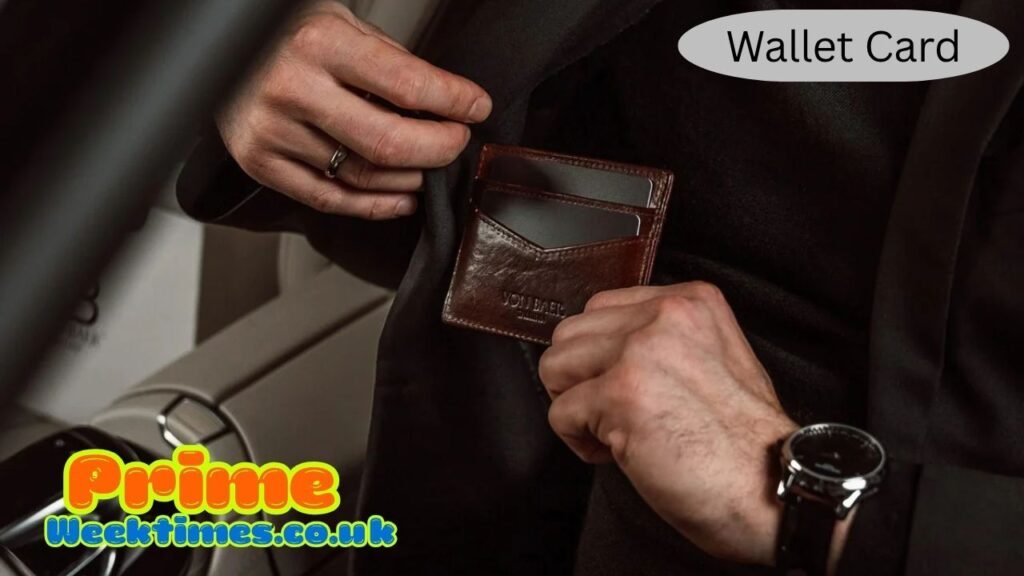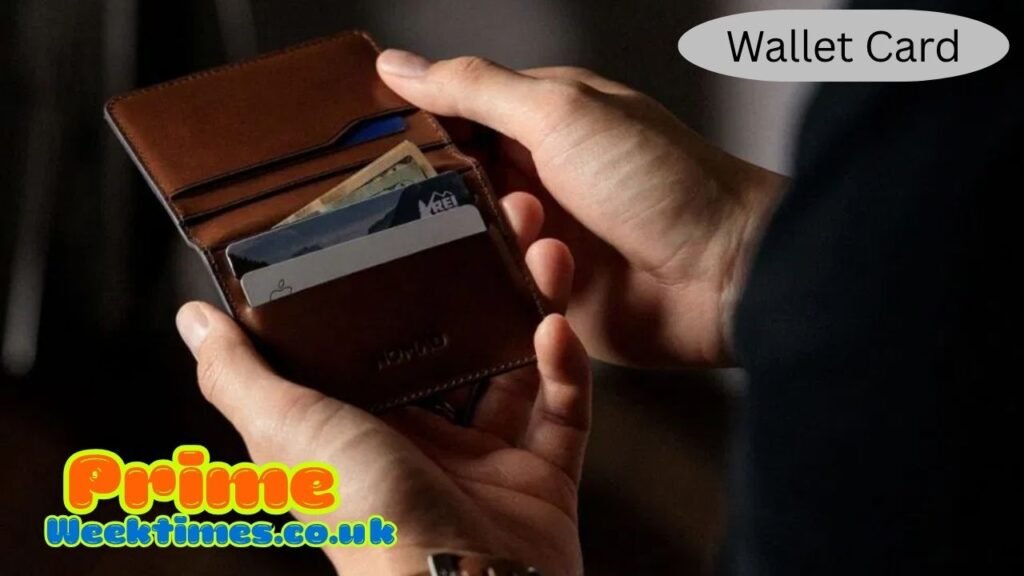Wallet Card – The Ultimate Guide to Modern Convenience, Security, and Style

Introduction to the Concept of a Wallet Card
In today’s digital and fast-paced world, simplicity, efficiency, and security have become the cornerstones of daily life. One small yet powerful tool that embodies all three is the wallet card. Whether used for payments, identification, access control, or medical emergencies, the wallet card remains an essential item that bridges the gap between traditional practicality and modern technology.
The wallet card has evolved far beyond being just a piece of plastic. It can store information, enable transactions, unlock doors, and even represent a person’s digital identity. From smart chip cards and RFID access cards to medical information cards and personalized ID cards, this simple item now plays a vital role in personal, corporate, and digital security.
Despite the rise of mobile wallets and virtual IDs, physical cards remain irreplaceable in many situations. A wallet card offers tangible convenience, functioning even when your phone is dead or offline. This versatility has made it an enduring part of everyday life, blending tradition with innovation in a sleek, pocket-sized design.
What Is a Wallet Card?
A wallet card is a portable card-sized item typically made of durable plastic or metal, designed to fit inside a wallet. It can serve a variety of purposes depending on its use—financial, medical, professional, or personal.
The standard wallet card size, known as the CR80, measures about 3.375 inches by 2.125 inches (85.6mm x 54mm)—the same size as most credit cards. This compact format makes it ideal for carrying essential information or enabling quick, secure access in daily routines.
While traditional wallet cards were purely physical, modern innovations have turned them into multifunctional smart devices. Some wallet card versions include embedded chips, QR codes, or NFC technology, allowing them to interact seamlessly with digital systems.
The Evolution of the Wallet Card

The history of the wallet card dates back to the mid-20th century when plastic credit cards replaced bulky paper-based systems. Over time, this simple invention revolutionized financial transactions and identification systems worldwide.
In the 1980s and 1990s, magnetic stripe cards became the norm, paving the way for electronic verification and ATM access. The introduction of chip-based smart cards in the 2000s elevated the wallet card to a new level of security and efficiency.
Today, wallet card technology continues to evolve. Many modern cards now use contactless systems such as RFID or NFC to enable quick payments or secure entries. From Apple Wallet-compatible NFC cards to metal cryptocurrency cold-storage wallet cards, the innovations keep expanding the boundaries of what a simple card can do.
Types of Wallet Cards
The term wallet card covers a wide range of designs and uses. Below are some of the most common types used today:
1. Payment Wallet Cards
Credit and debit cards are the most popular types of wallet card used globally. They provide convenience and security for making purchases, accessing ATMs, and managing finances. Modern payment cards come with EMV chips, PIN verification, and contactless capabilities.
2. ID and Access Wallet Cards
Government-issued ID cards, driver’s licenses, and employee access badges fall under this category. An ID wallet card can hold personal data, photos, and security chips, making it a reliable form of identification or building entry pass.
3. Medical Wallet Cards
A medical wallet card contains essential health details such as allergies, medications, emergency contacts, and insurance information. This card can be lifesaving during emergencies when quick access to medical data is crucial.
4. Business and Professional Wallet Cards
Professionals often carry a wallet card that acts as a business ID, membership proof, or professional certification. It represents identity, affiliation, and credibility in corporate environments.
5. Digital and Smart Wallet Cards
Smart wallet cards come equipped with chips, QR codes, or NFC tags that can link to apps or online databases. Some even allow users to store cryptocurrency securely offline, acting as a digital wallet with physical protection.
6. Personalized and Custom Wallet Cards
Many people design custom wallet cards with meaningful quotes, photos, or reminders. These cards can commemorate special occasions, act as gifts, or serve as motivational keepsakes that fit perfectly in a wallet.
How a Wallet Card Enhances Everyday Convenience
Carrying a wallet card eliminates the need for bulky documents, separate keys, or multiple devices. For instance, a single smart card can store access credentials, payment capabilities, and ID details all at once.
Businesses often use wallet card systems for employee identification and building entry, ensuring smooth, secure access without manual checks. Similarly, consumers enjoy faster transactions at retail stores using contactless payment wallet cards.
Another growing trend is digital-physical integration, where the same wallet card can link to a mobile app. This hybrid model provides the best of both worlds: physical accessibility and digital functionality.
Wallet Card Security and Data Protection
Security has always been a major consideration in wallet card technology. Modern cards include several layers of protection to prevent fraud and unauthorized use.
EMV chips, used in credit and debit cards, encrypt transaction data to prevent duplication. RFID and NFC cards include secure communication protocols that limit data exposure. Many organizations also issue wallet cards with PIN or biometric verification for added safety.
Additionally, medical and ID cards often feature holographic seals, microtext, or embedded chips to prevent counterfeiting. The durability and water-resistant design of a wallet card ensure long-term data integrity, even in everyday use.
The Role of Wallet Cards in Digital Identity

As society transitions toward digital identification systems, the wallet card remains an essential bridge between the physical and virtual worlds. Governments, corporations, and universities use hybrid ID systems where physical cards synchronize with digital databases.
This dual model enhances flexibility—users can present a physical card in person and use a digital equivalent online. In many regions, the wallet card serves as both a traditional ID and a secure gateway to digital services such as healthcare portals or government apps.
The digital ID trend has also led to innovations such as dynamic data displays on smart cards, which change information in real time. These high-tech versions of the wallet card are paving the way for the next generation of secure identification.
Personalized Wallet Cards – Blending Functionality and Sentiment
Personalization has become a defining feature of the modern wallet card. People now design cards that reflect their style, identity, or values. Custom metal wallet cards with engraved messages, stainless steel survival cards, and minimalist wallet-sized tool cards are gaining popularity.
Some companies offer personalized QR-coded wallet cards that store contact details, social media links, or business information—essentially functioning as a digital business card. These designs not only serve practical purposes but also make powerful personal statements.
A customized wallet card can be a thoughtful gift, whether it’s engraved with a loved one’s photo, a wedding date, or motivational quotes. It’s small enough to carry every day but meaningful enough to last a lifetime.
Environmental Impact and Sustainable Wallet Card Options
As sustainability becomes increasingly important, many organizations are moving toward eco-friendly wallet card materials. Traditional PVC plastics are being replaced by biodegradable alternatives such as recycled PETG or bamboo composites.
Some companies even produce wallet cards made from metal or wood, providing a durable and stylish option with a lower environmental footprint. The rise of digital wallet integration has also reduced the need for excessive physical cards, promoting a more sustainable approach to identification and payment.
By adopting green manufacturing processes and recyclable materials, the wallet card industry is aligning itself with global sustainability goals without compromising quality or usability.
The Future of Wallet Cards – Smart, Secure, and Integrated
The future of the wallet card lies in integration and intelligence. As technology advances, cards are becoming more interactive and connected. Smart wallet cards equipped with Bluetooth, fingerprint sensors, or e-ink displays are already in development.
These futuristic cards will allow dynamic updates—such as changing PINs, displaying one-time passwords, or syncing with apps in real time. Imagine a single wallet card that functions as your ID, credit card, public transport pass, and office key—all secured by biometric data.
In addition, blockchain technology is being integrated into digital wallet cards to improve data transparency and reduce fraud. The combination of security, convenience, and innovation makes the next generation of wallet cards a key component in the global shift toward digital ecosystems.
Benefits of Using a Wallet Card
The wallet card provides a wide range of benefits for individuals, businesses, and institutions alike.
For Individuals:
- Easy to carry and access
- Works without internet or battery
- Secure and durable
- Can be personalized or customized
- Acts as an emergency information tool
For Businesses:
- Enhances brand professionalism
- Improves employee security and access control
- Reduces paperwork and manual processes
- Integrates with digital management systems
For Healthcare and Government:
- Provides fast identity verification
- Stores crucial emergency information
- Simplifies healthcare data sharing and insurance processes
Ultimately, the wallet card remains one of the simplest yet most powerful tools in modern life—compact, functional, and adaptable across multiple industries.
How to Design and Maintain a Wallet Card
Designing a professional wallet card involves balancing aesthetics with functionality. Whether for personal or business use, it should include essential information, clear typography, and durable materials.
When creating an ID or membership wallet card, security features such as barcodes, magnetic strips, or embedded chips can be added for verification purposes. For aesthetic cards, custom printing techniques like laser engraving, embossing, and metallic finishes can enhance visual appeal.
Maintenance is equally important. Keeping the wallet card in a protective sleeve prevents scratches and data damage. Avoid exposing it to extreme heat or moisture, as this can warp the material or affect embedded chips.
Why the Wallet Card Still Matters in a Digital World
Despite the rise of mobile wallets and apps, the physical wallet card still holds immense value. Not every location supports digital payments or ID scanning, and some people prefer the reliability of a physical backup.
A wallet card doesn’t depend on battery life, internet access, or software compatibility—it’s always ready to use. Moreover, tangible cards often carry emotional or symbolic meaning, something digital alternatives can’t replicate.
From sentimental engraved cards to professional smart IDs, the enduring popularity of the wallet card lies in its blend of reliability, familiarity, and innovation.
Conclusion – The Timeless Value of the Wallet Card
The wallet card has come a long way from its humble beginnings as a simple identification or payment tool. Today, it represents a perfect fusion of practicality, technology, and personalization. Whether you’re paying for coffee, entering your workplace, or providing medical details during an emergency, your wallet card plays an indispensable role.
As the world continues to digitize, the wallet card remains a trusted, tangible reminder that convenience and security can coexist. Its evolving form—smart, sustainable, and sleek—ensures that it will continue to serve as a cornerstone of personal identity and access in both physical and digital realms.
